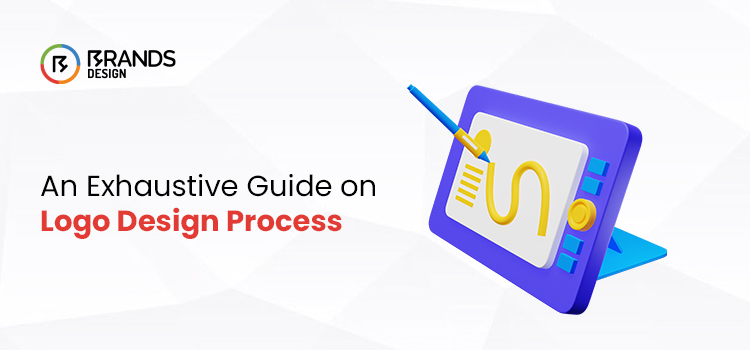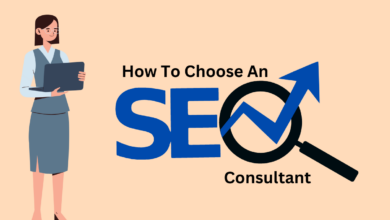An Exhaustive Guide on Logo Design Process

Last Updated on February 17, 2024 by Ali Hamza
A successful logo design requires more than just inspiration from its client. There are market trends to analyze, audience behavior to decipher, and brand objectives to be met. Here’s your guide to creating a logo that gives you an advantage in the marketplace.
Logos are one of the most important parts of any business branding perspective. Your logo does not just mean the final end product that you see on your business stationery or on your website; and it manifests the image and philosophy of an organization in a small space.
When you hire an expert logo designer, they will help you with creating a logo design that is representative of your business and its core values. Designing a logo yourself is possible, but there are certain things you need to keep in mind while doing so.
Logo Designing
Designing logos is a dynamic process involving many steps, from conceptualizing and sketching to evaluating and refining. It’s an exhaustive process that requires the designer to truly understand their client’s brand inside and out. Take time to understand your goals and needs; the designer will be better equipped to create an image that suggests your values, mission, and aspirations.
Logo Design Process
Have a look at the logo design process step by step:
Define Brand Identity
The core of your brand’s personality is deeply rooted in the culture of your brand and often reflected on its social media platforms. Whether it’s a clothing brand or a professional service company, this personality is crucial to both the success of your business and its relationship with its customers and followers.
Logo Inspiration
A logo design project can be tedious, but with the help of the tips below, you can become more familiar with how to design a logo. You can start by brainstorming ideas for your logo. Keep in mind the following pointers when doing so.
Identify your ideal goal and customers.
When you know your target customers’ needs, it’s easier to design a logo that will appeal to them. Talk to you r ideal customers if you have some and find out about their buying decisions, lifestyle, and favorite brands.
Research your competitors
To design a logo, first, make a list of all your competitors. you have to divide them into two groups based on the logos that you like and the logos that you dislike. This will help you understand how to begin designing your logo, as well as how a logo is designed that sets you apart from competitors.
Location of your logo
To maximize return on investment, keep your logo simple to make it suitable for both online and offline use on marketing materials such as T-shirts, business cards, and packaging.
Decide the Type of Logo
When you are trying to create a brand logo from scratch, it is important to choose the type of logo that represents your brand. There are many different types of logos, but most companies use one of these three:
Wordmark logo design
A wordmark logo consists only of your business name with no additional design.
Monogram logo type
A logo that features a company’s initials, along with the full name of the company is a monogram.
Combination logo type
Combination logos are an assortment of wordmark and monogram logos.
Select Logo Shape
The shape of your logo will significantly affect the aesthetics of your logo. The shape could be symbolic, or it could be in the form of a container for the logo itself. Containers are an important part of a logo. They can help frame a symbol or protect it from the surrounding environment.
The different logo types in view of shape are recorded beneath.
- Round logo plan for organizations with short names, development, and course.
- Rectangular and square-molded logo plan for partnerships with bigger names.
- Three-sided shapes can be utilized to address “A” and “V” in a logo and are by and large used to portray development and heading.
Conclude the Layout
The layout of a logo has an impact on its visual perception. One popular layout option is the stacked text layout, in which the company name appears above a tagline or slogan.
A symbol may be used in a logo to complement the primary elements of design. If your company slogan is part of your corporate identity, it can be included in the design of your logo.
Select Font and Colors
Font
Many font types exist, each conveying its own meaning. Following are a few commonly used font types and their impact on logo design.
- For a cutting-edge and clean search in your logo, go for Sans-Serif textual style.
- On the off chance that you wish to draw in a full-grown segment, you should pick Serif textual styles like the Times New Roman text style.
- To make your logo notable, particular, and formal, Script textual styles can be utilized.
- Show text styles are more advanced and tense and can draw out your image’s character without limit.
Color
Certain colors in a brand logo can evoke feelings that appeal to a certain audience. In order to help you decide which colors would suit your brand logo, here is a list of well-known color associations.
- Warm varieties like red, orange, yellow, and pink portray good faith, inspiration, bliss, and happiness.
- Cold varieties like blue and other pastel shades show achievement and impressive skill.
- For more rich energy, go for colors like dark and dim that overflow complexity and class.
- For peaceful energies, various shades of green would be great.
Create Logo Now!
Once you know how to design a logo from scratch, you are ready to create your own. There are many different ways that you can create your own logo.
- You can utilize programming like Photoshop or Adobe Illustrator to plan your logo.
- You can buy a premade logo layout and tweak it as indicated by your preferences.
- You can utilize a web-based logo creator administration.
Logo design is a broad subject, and the steps that go into creating a logo aren’t concrete. There will be overlap in how different designers approach a project, but the process can often end up being vastly different even when designers are working with similar clients and similar products. So, keep all of that in mind as you read through this guide, and know that these steps can be taken in any order or altered to meet your needs and preferences.
Read More: Print Custom Cone Sleeves with Logo and Boost Market Attention


